Why the rental sector is expanding its services
15 October 2021
Major equipment rental companies around the world are extending the services they can offer, from designing formwork to employing designers and estimators. Murray Pollok reports.
The equipment rental market has a nice way of presenting itself as the solution to every problem. Are your order books full? Then rely on us to help you during your moments of peak demand. Is the market a bit soft? Why not let us help you be more efficient and cut costs?
The past 18 months – the Covid era – has given rental companies plenty of opportunity to deploy both arguments: rental put itself forward as an essential support and logistics partner to keep things going when the pandemic and lockdowns were at their height. Now when demand is returning, they are helping plug gaps in equipment supply chains and supporting contractors under pressure.
For rental companies, challenges such as Covid, supply chain shortages, material price rises and sustainable operation have all served to accentuate their role, as they see it, at the heart of the modern construction site.
AMECO and Fluor
Take AMECO, the former equipment rental arm of construction and EPC contractor Fluor. Fluor’s decision in late 2019 to sell AMECO – itself a partial acknowledgement that it didn’t need to own all its own equipment – has led to the creation of a spun-off business in North America owned by private firm One Equity Partners.
The incoming CEO Gary Bernardez – who had a previous stint running AMECO between 2001 and 2012 – says the new stand-alone business, in addition to continuing to work with Fluor, has a strategy that calls for a wider role than simply supplying equipment when it is needed.
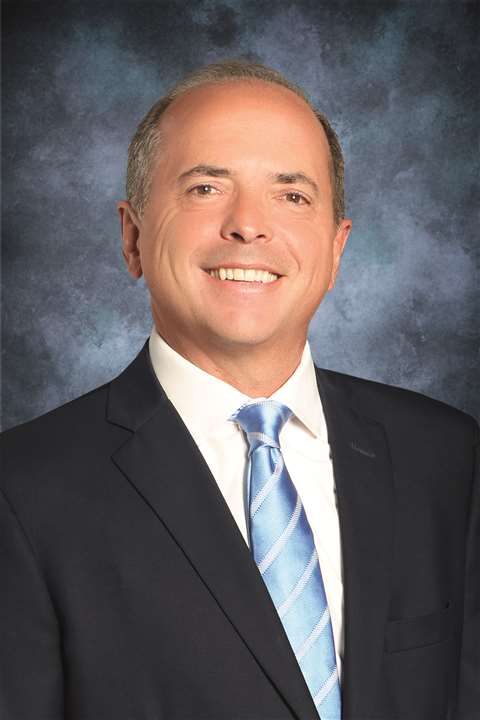 Gary Bernardez, CEO of AMECO North America.
Gary Bernardez, CEO of AMECO North America.
“Coming out of the recent craziness of two years, and the uncertainty of what’s going to come out of the ground, we’re hearing words like we want a ‘construction light’ model, we’ve got to relook at our balance sheet,” says Bernardez.
“We have a tremendous resume of helping clients - not just EPC contractors - rethink what they need to own. And then being able to bring a solution that obviously incorporates rental, but it’s a little broader than that.
“In some of the cases of people we’re talking to, it could involve the transition of some [equipment] to where we would incorporate that into our fleet. And that could even mean taking on some of their estimating people, some of their fleet management people, because they’re just trying to figure out what they really want to be good at.”
AMECO’s mid-to-large scale projects
The incoming CEO says AMECO’s sweet spot will be mid -to large-scale projects, where they can help contractors manage complex projects. “When we get plugged into a contractor on the front end, given our 75 years of living inside a contractor, we can do some things commercially, service level wise, that make us a little different. I think that bring more value to a contract.
“We are able to extend that kind of asset management approach all the way through tool, supply, consumables, to support the different crafts on a site.”
He also mentions add-on services such as fueling, the supply of welding rods, transportation. “All those things that a contractor is struggling to manage. And if they have one contracting entity that they can look to that says, I know you have X percent of this job covered under your contracting structure. Then why isn’t that a more efficient way than them hiring more staff and being involved in more end pieces that they really don’t have the same competence that we have because we focus on it every day.”
Bernardez also highlights the role that a rental company can take over multiple projects, saying, “One of the bigger changes we’re looking at or thinking of doing is trying to show value in looking at either the client or the contractor’s capital projects over a multiple period. We can bring some additional value other than just on a project-by-project basis.
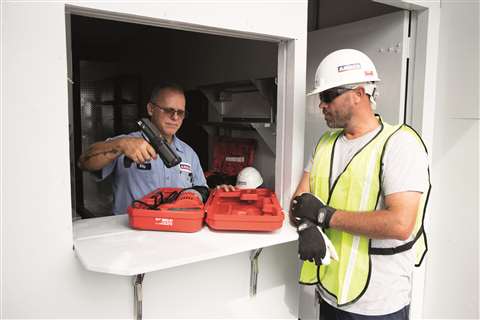 An AMECO ‘tool trailer’ on a jobsite.
An AMECO ‘tool trailer’ on a jobsite.
“We see owners getting a bit more involved in some of those decisions because the contracting world is going through a bit of a reshuffling. The owners are looking at what they can do to make sure their project is coming on time and under budget and the contractors have to match up to some of those owners. We can play in both those spaces.”
Largest rental company in Australia
The same wider vision for rental is seen in other parts of the world. The largest rental company in Australia, Coates, recently took the decision to remove the word ‘Hire’ from its name because it was limiting how the business was perceived by its customers and did not reflect the growing importance of its engineering services, which already represent around 10% of revenues.
Coates CEO, Murray Vitlich, speaking to sister magazine International Rental News (IRN) by video link from the company’s head office in Mascot, Sydney, says the rebrand will make it easier to approach customers. “No amount of advertising is going to convince an engineer that ‘Coates Hire’ is the company they should be talking to,” he says.
“But allowing them to understand that we’ve got a team of 50 designers and engineers who can work with their teams to provide an expert solution, then that’s a value add that we should be promoting. We can help them with their tender design to take costs out of the business and help them win the tender.”
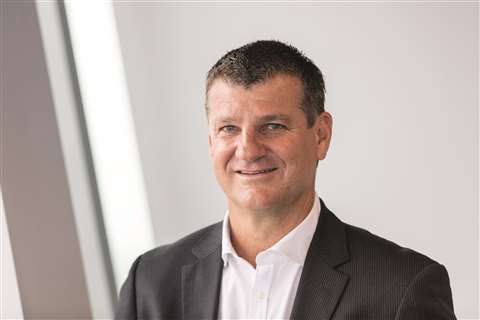 Murray Vitlich, CEO, Coates.
Murray Vitlich, CEO, Coates.
He says that the way Coates will go to market in hire equipment is going to be very different to how it approaches engineering solutions. One key aspect of this wider role is in industrial plant maintenance shut-downs – the so-called ‘shuts’ that drive a lot of Coates’ activity.
“We’ve got a good track record with a number of large customers in Australia, but really we haven’t gone out and promoted that. And there are industrial plants around Australia where we can go and provide a service and show through the history that we’ve already got under our belt.
“We assist companies with major shuts from the perspective of tracking and tracing equipment and driving efficiency through those maintenance shuts. We’ve been extremely successful in working with Chevron in the oil and gas industry here in Australia.”
He says a typical industrial ‘shut’ is 50% manpower and 50% waste; “Any way that you can add efficiency to tracking the tools and the equipment and the people within a shut [is a benefit]; it is a significant amount of money you’re talking about when shutting down a gas plant or an oil or industrial facility.”
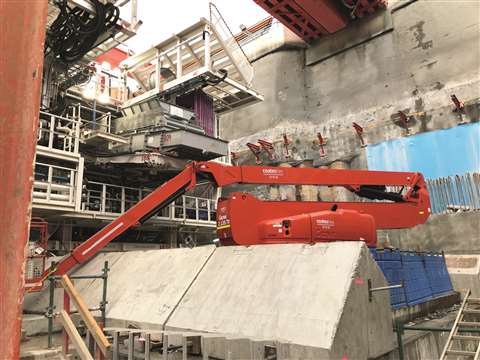 Rental company Coates said the Australian government is bringing forward some infrastructure projects to help with the pandemic recovery. Pictured is a project in Melbourne.
Rental company Coates said the Australian government is bringing forward some infrastructure projects to help with the pandemic recovery. Pictured is a project in Melbourne.
Covid’s impact on rental
In other cases, the Covid pandemic has actually given rental companies the confidence to go to their existing contractor customers with a wider project management role in mind.
Sunbelt Rentals UK – the UK business of rental giant Ashtead Group, which also owns the multi-billion Sunbelt Rentals business in North America – managed to win as much as 80% of health department contracts to create 500 Covid-19 testing centres around the UK.
Andy Wright, CEO of the UK business, says, “The concept of mobilising a temporary infrastructure to help our customers to deliver their project applies to a lot of different sectors.
“Ultimately the client’s core business is to build something or provide an event or whatever. The kind of things that they use to do that is a necessary evil…So I think there’s an opportunity to provide a holistic service, encompasses all those different products and services that allows our customer to focus on [their core business].”
He can envisage, like Coates and AMECO, having estimators to work on behalf of clients. “It depends where it stops, but you can decide what boundaries you put around it. But the project management, estimating, providing almost consultant services to create best cost, best value, low CO2, safety - all those areas that the client might do for themselves at the moment, they could potentially leave that to people like us.”
Sustainability and the net zero agenda
And of course, there is the sustainability, net zero agenda, which is becoming an increasingly important issue for everyone in the construction supply chain.
Equipment used during the construction phase may be a modest component of a building’s total CO2 footprint – when you factor in the materials used in construction and ongoing operation and maintenance during decades of use – but it is something that rental companies can control and measure, given their forensic approach to managing assets.
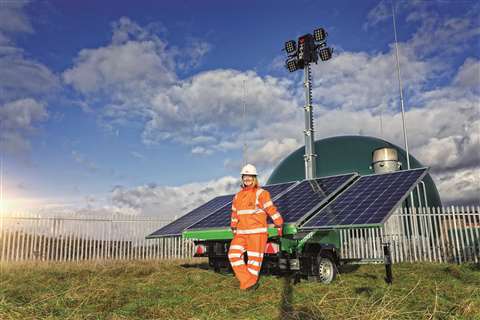 Rental companies like Sunbelt Rentals are investing in cleaner, low emission equipment.
Rental companies like Sunbelt Rentals are investing in cleaner, low emission equipment.
The rental industry has long been pushing the ‘circular economy’ aspects of rental and the greater efficiency of having a smaller number of (rental) machines used intensively rather than higher volumes of inefficient and underused owned equipment.
Rental companies can measure and communicate CO2 emissions from their equipment, and they can also help contractors manage the transition to new, cleaner power technologies, such as hybrid of battery powered machines.
“My view is that we need to provide our customers with information that allows them to make better decisions about their business and the things that are important to them,” says Wright.
“If you think about things like CO2 reduction, it’s being driven by government and tier one [major] contractors who are having to step up their game in that area. The consequence is that we have to do exactly the same. We can provide a lot of information to customers to help them achieve their objectives.
“So, for example we are working really hard right now on our sustainable power provision where we are combining both old technology generators with battery storage units, where we made a very significant investment in the last 12 months.
“We’ve also got products that are intended to optimise power distribution systems, and then you’ve got solar as well. So, if you can combine all of that into a package, you can actually save customers a lot of money…And you can save customers a lot of CO2. You need to be able to support them and to measure that and prove it.”
The types of customer relationship being explored by AMECO, Coates and Sunbelt Rentals UK are being replicated the world over, and in different ways. In Japan, major rental firms are partnering with contractors on remote or autonomous operation of construction equipment.
In Germany, Zeppelin Rental is investing in services – such as traffic management – that allow it to contribute to a project from the start to the finish; and power rental giant Aggreko is investing heavily in battery, solar, gas and bio-fuel technologies that will help its clients reduce CO2 emissions.
Rental companies may not be the solution to every problem, but no one can accuse them of not trying.
Rental companies and CovidRental companies’ experience of Covid depended on the particular approaches to lockdowns taken by governments. That meant quite different outcomes in even neighbouring countries: the Netherlands and Germany saw construction (and rental) continue through the pandemic, while the UK, France, Italy and Spain saw a far greater impact. Rental was down by 16% year-on-year in the UK, by 14% in France and 12% in Italy. That meant that many large European rental companies saw significant revenues falls in 2020, while others – such as Zeppelin Rentals in Germany – managed to grow their businesses. In Australia rental was around 5% down, while Japanese renters experienced a flat year, with Covid simply preventing growth. Top 100 rental companies Recovery will be relatively swift, however. The European Rental Association (ERA) is forecasting that Europe’s equipment rental industry will grow by 3.6% in 2021 before expanding by 4.5% in 2022. In the US, strong demand for construction and industrial services, paired with the infrastructure stimulus package, are the key factors behind the American Rental Association’s rental growth forecasts of +3.5% this year followed by a sharp +9.7% increase in 2022. John McClelland, ARA vice president for government affairs and chief economist, said there was still uncertainty about the impact of the stimulus funds, but that the “early analysis is quite positive.” |
STAY CONNECTED



Receive the information you need when you need it through our world-leading magazines, newsletters and daily briefings.
CONNECT WITH THE TEAM








